St. John's Catholic Seminary
Introduction
Text-to-speech Audio
St. John’s Catholic Seminary was established in 1904 by Bishop Thomas Lillis, who was a champion for parochial education. First operating out of St. Patrick’s Parish downtown, St. John’s opened its own facility at this location in 1931. It was the second secondary-education school to open in the Diocese of Kansas City, the first to combine high school and seminary education, and one of 21 new facilities that Bishop Lillis himself established. St. John’s saw continued growth throughout the years which prompted many improvements and expansions, including the Gethsemane Retreat House and Sisters House. After seminary operations stopped in 1957, St. John’s continued to function as a high school until 1983. It was then used for clergy meetings until 1999 and leased to two independent charter schools through 2019. Since then, the property has remained vacant but was accepted to the National Register of Historic Places in 2021.
Images
St. John's Catholic Seminary.
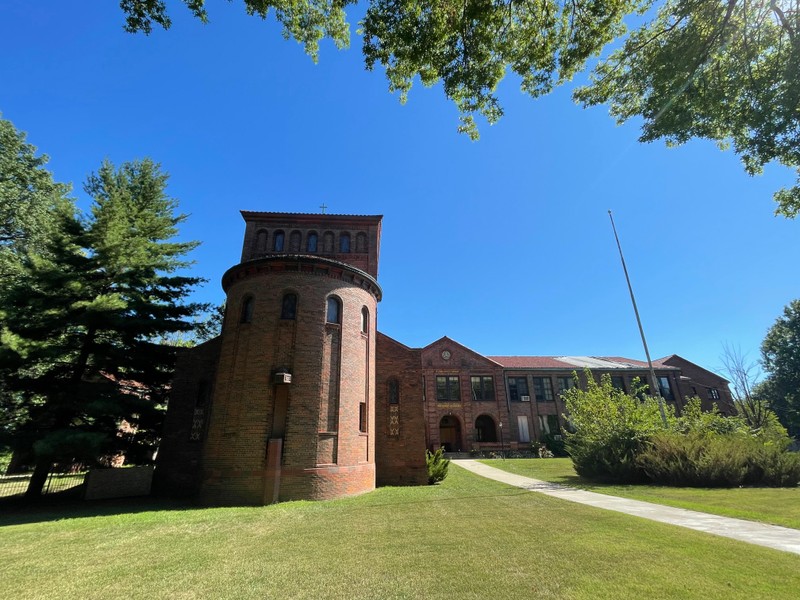
The main entrance and west wing of St. John's Catholic Seminary.

The three-story addition to the west wing was completed in 1948. Note the decorative brick detail.
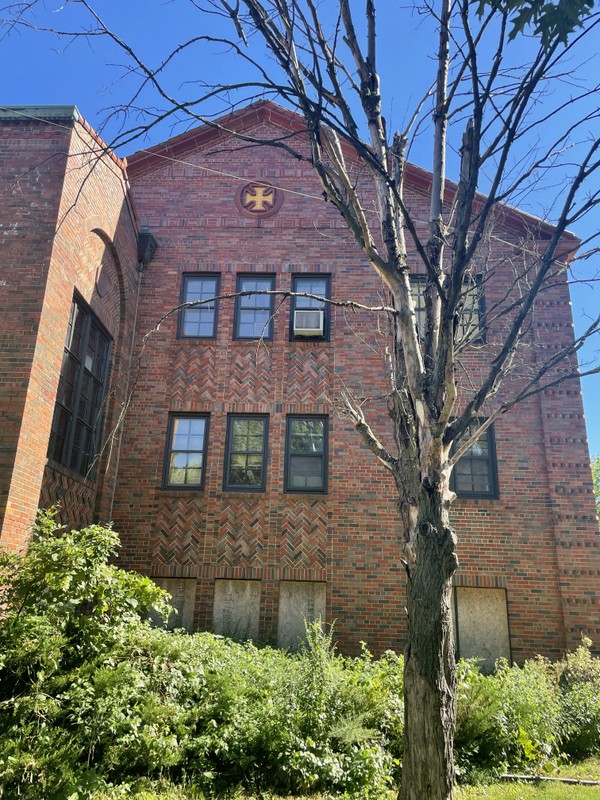
The building plaque for St. John's Catholic Seminary constructed in 1930. The school and seminary opened in 1931.
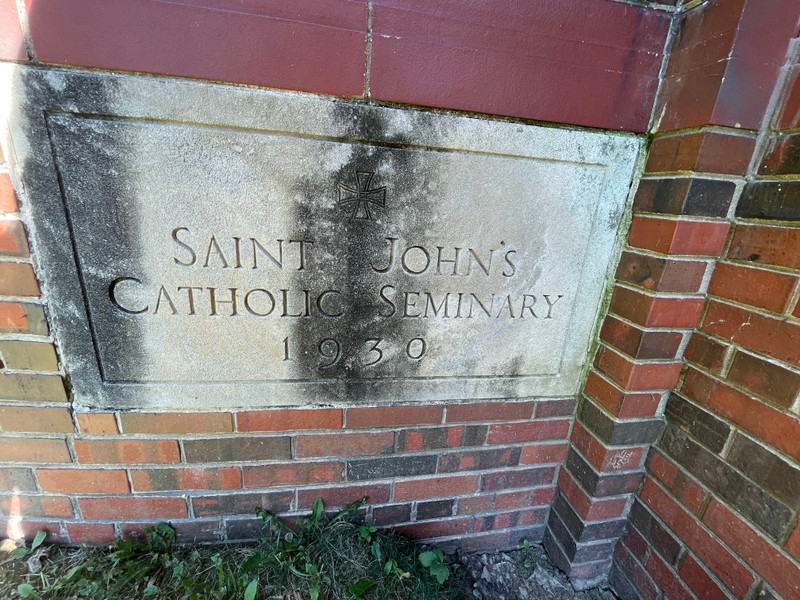
Bishop Thomas F. Lillis at the dedication ceremony of St. John's on August 15, 1931. Courtesy of the State Historical Society of Missouri via Pendergast KC, Kansas City Public Library, Kansas City, MO.
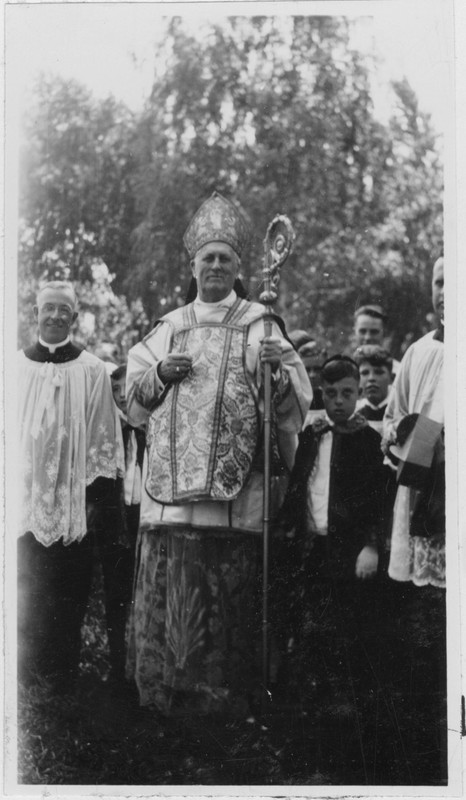
St. John's Catholic Seminary c.1930. Courtesy of Missouri Valley Special Collections, Kansas City Public Library, Kansas City, MO.

The transom window space over the main entrance features patterned tile and an inscribed seal with "Christus Lux Vera" or "Christ as the New Light".
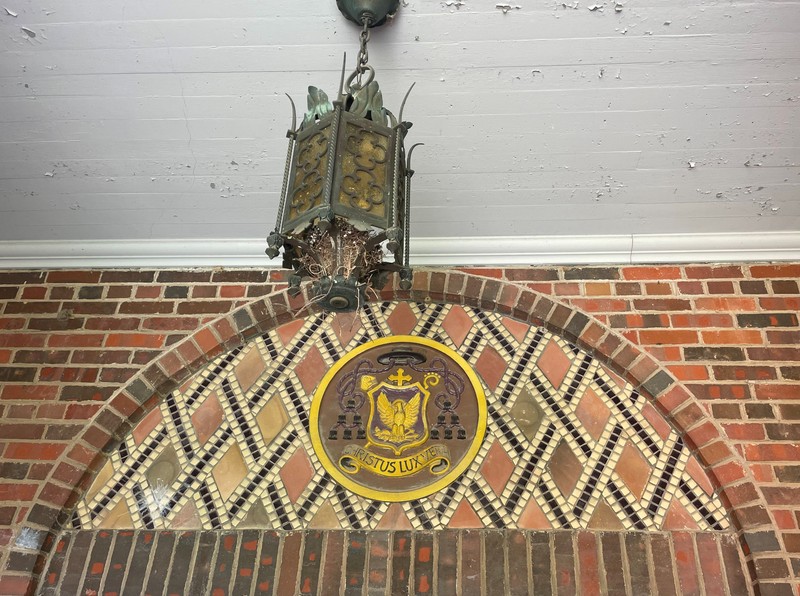
The Gethsemane Retreat House was constructed in 1942. Pictured here is the south end of the building taken from the street, as the property is fenced and posted No Trespassing.
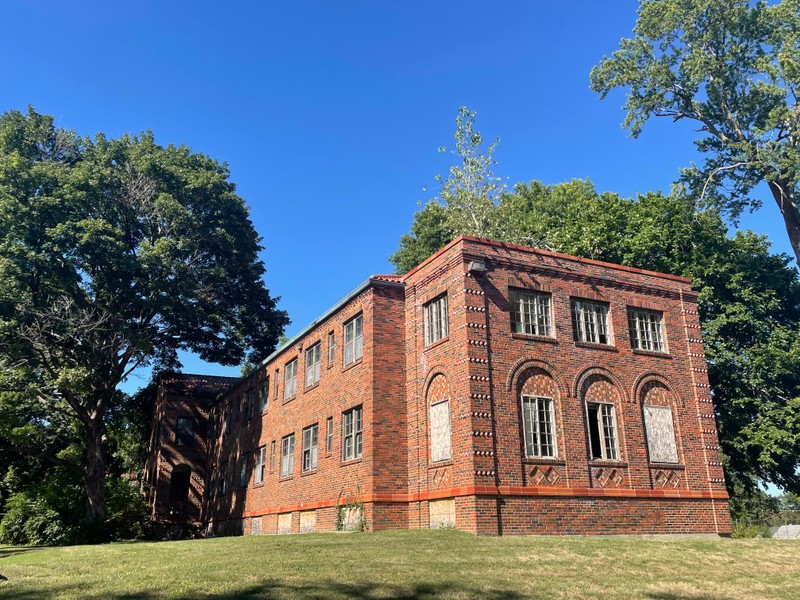
Original 1930 building plan for St. John's Catholic Seminary. Courtesy of Missouri State Parks.

Sanborn map c.1941 shows the original construction of St. John's. Courtesy of Missouri Valley Special Collections, Kansas City Public Library, Kansas City, MO.
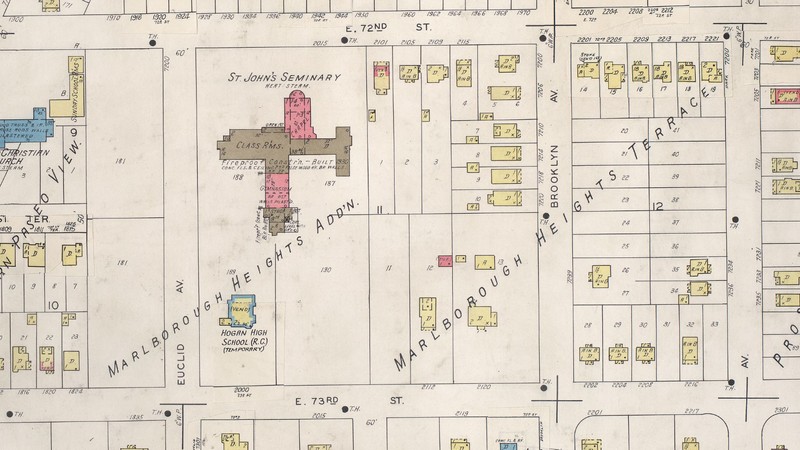
Sanborn map c.1957 shows the Gethsemane Retreat House (1942) and the west wing addition (1948). Note the difference in development surrounding St. John's from the Sanborn map c.1941. Courtesy of Missouri Valley Special Collections, Kansas City Public Library, Kansas City, MO.
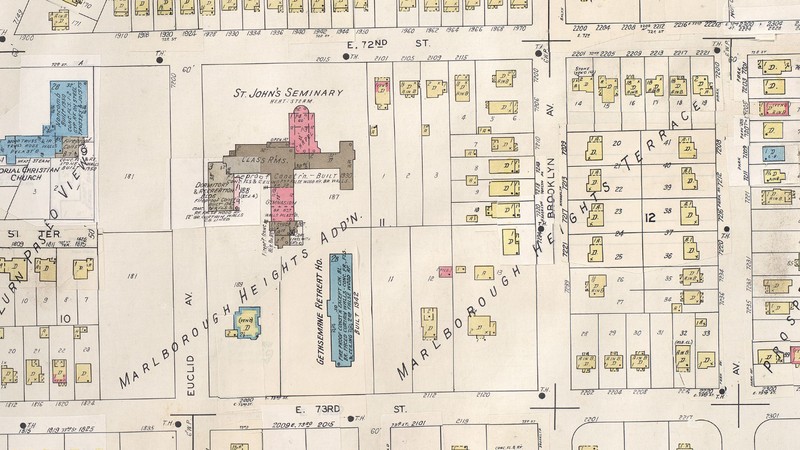
Backstory and Context
Text-to-speech Audio
The first Catholic priest arrived in Kansas City in 1828 and by 1857, there were just two parishes that served roughly 200 families. A third, St. Patrick's Parish was established at 8th and Cherry in 1868, around the same time Kansas City was seeing a rapid increase in population. By 1880 the Catholic population climbed to nearly 19,000 and had reached 45,000 at the turn of the century. With increasing population, the need grew for parochial schools.
Father Thomas Francis Lillis (1861-1938) was a Priest of St. Patrick’s from 1888 until 1904, when he founded St. John’s Seminary Association in an effort to formalize priesthood education. St. Patrick’s parochial school provided the first seminary courses for St. John’s Catholic Minor Seminary in 1908, before it moved to De La Salle Academy in the following years. Lillis was named Bishop of the Diocese of Kansas City in 1913 and was one of only three Bishops to come out of St. Patrick’s Parish. Over the following 25 years, Lillis proved himself as a champion for parochial education, opening 21 new educational facilities. Of those included the first two secondary-education schools in the Diocese of Kansas City - Rockhurst High School in 1923 and St. Johns Minor Seminary in 1931.
Efforts by St. John’s to establish their own dedicated facility began in 1920, which would be the first to combine high school and seminary education. The first parcel of land was acquired for St. John’s in December of 1927, a four-and-a-half acre plot on the Joseph F. Jones property just north of 72nd and Euclid. Within the first year, 18 students occupied the Jones’ residence while awaiting the construction of the seminary. Building plans were finalized by Maurice Carroll and O’Meara & Hills in 1930, and construction was completed in February 1931. The two-story, Romanesque Revival building was built using classic Medieval European architectural style. It features a clay tile roof, rounded arches over windows and doorways, and decorative brick detail. The asymmetrical building was constructed with four wings, the most prominent being on the north side, featuring a square tower with a rounded apse which houses the Chapel. The west wing contained classrooms and dormitories, the rear wing a gymnasium and auditorium, and the east wing housed the priests' quarters. After the official dedication on August 15, 1931, local news sources described it as “one of the most modern buildings in this section.”
St. John’s Catholic Seminary saw many additions and improvements over the years, in addition to the purchase of an additional 6 acres of land. Designed by local architect Joseph B. Shaughnessy, the Gethsemane Retreat House was completed in May 1942, which contained dormitories, a recreation room, and a conference room with an altar. It primarily accommodated the clergy of the Diocese of Kansas City, but also hosted women’s groups and retreats for local Catholic school students. Years later, Shaughnessy was commissioned two more times. The first was a three-story addition constructed on the west side of the seminary building. It was completed in 1948 and included two recreation rooms and an infirmary, and doubled the student capacity. In 1958, he designed an accompanying two-story building to house the nuns assisting at the school, referred to as the “Sisters House.”
Seminary operations at St. John’s ceased in 1957 but it continued to operate as a high school for several decades. The student body continued to grow which prompted the proposal of an expansion plan in 1961. The first phase was to convert Gethsemane into dormitories for the seniors, who were newly required to live on campus. In the second, a new gymnasium was completed in 1965 to the south of the main building, the original gymnasium was converted to a library, and the original library was divided to create two new classrooms. The final classes of St. John’s were held in 1983. The property was then used for clergy retreats and meetings until 1999.
In the years following, the property was leased to The Academy of Kansas City Charter School from 1999 to 2009 and The Pathway Academy charter school from 2009 to 2019. Since then, the property has remained vacant. However, in 2021, St. John’s High School and Seminary was accepted to the National Register of Historic Places for its significance in architecture.
Sources
History of Old St. Patrick, Institute of Christ the King Sovereign Priest. Accessed August 12th, 2022. http://www.institute-christ-king.org/kansascity-history/472-kansas-city-history-old-st-patrick.
National Register of Historic Places Registration Form: St. John's High School and Seminary, Missouri State Parks. Accessed August 12th, 2022. https://mostateparks.com/sites/mostateparks/files/StJohnsHighSchoolAndSeminary.pdf.
Daughtrey, Zachary S.. Catholic Kansas City. United States, Arcadia Publishing, 2021.
Present day photos by Nichole Stahly 8/10/2022
https://pendergastkc.org/collection/11756/ca-parish-open-b010-0001/bishop-thomas-f-lillis-st-john-seminary-dedication
https://kchistory.org/image/st-johns-seminary
https://mostateparks.com/sites/mostateparks/files/StJohnsHighSchoolAndSeminary.pdf
https://kchistory.org/image/sanborn-map-kansas-city-vol-9-1930-1941-page-p1111
https://kchistory.org/image/sanborn-map-kansas-city-vol-9-1930-1957-page-p1111
